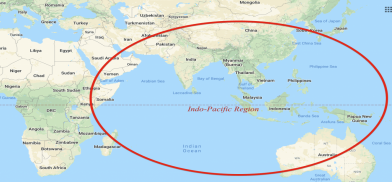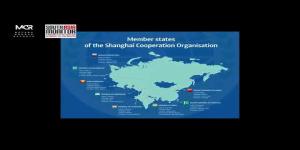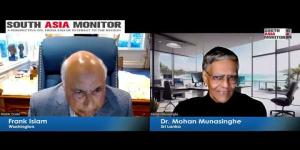India’s rise a force for good in the Indo Pacific region
India’s rise provides positive ripple impact to the region and the world, from economic and trade spillover effects to the larger equation of helping to secure and preserve the rules-based order that has been the main bedrock of global trade and maritime capacity, maintaining the sanctity of international law and global norms, and in securing the freedom of navigation and overflight in international waters

India celebrated its 75th year as a sovereign democratic republic on January 26. It now emerges as the power that has come of age, with its fast rising power equation and recognition. It is now the third most powerful country in Asia, according to the annual Asia Power Index 2024 by Lowy Institute, surpassing both Russia and Japan. The 2024 edition, which covered six years of data, is seen as the most comprehensive assessment to date.
The Global Firepower Index 2025 has also listed India to be the fourth most powerful military, behind the US, Russia and China. India’s position is largely driven by a consistent spending rate on defence, modernisation, and manpower. It is also the fourth largest military spender globally in 2023, and has spent 4.2 per cent higher than that of in 2022.
India has a holistic advantage both in emerging internal settings and external presence. Demographically, it is now the world’s most populous nation, surpassing China. It also has the highest birth rate in the world, with 2651 babies born every hour, more than twice of China at 1016 and more than five times of the US which stood at 418.
Trump's return to India's advantage
For India under Modi, the path towards both defence and socio-economic reform has never been more profound and far-reaching in the decades that precede it. While India’s rapid rise will lend confidence to current partners and future allies including Quad partners Washington and Tokyo, the fraught relationship with Beijing is expected to turn in Delhi’s favour with Trump back in office.
Trump, a long time friend of Modi, has more to depend on India with its growing double-edged advantage to Washington, both in India’s equation with Russia and China for Trump to solidify its carrot and stick approach to both powers. The same cannot be said of other allies especially Japan, where its waning power at least as reflected in the ranking, has been attributed to its economic decline and continuing demographic stagnation, falling down to fourth place in most of the indicators in the power assessment.
India performs best in the future resources measure, placing 3rd behind only the United States and China. The Asia Power Index states that the United States is still dominant but faces rising military pressure from China, although China is now seen as plateauing in its power indicator.
Key drivers behind India’s rise
India is one of the world’s fastest-growing major economies, with ambitious new economic transformation led by sustained digital economic reform and modernisation of its manufacturing and technological prowess. Its youthful, dynamic workforce and an advantageous demographic is a driving force behind this expansion, positioning India as a hub for innovation and investment. Under Modi’s reforms, ventures like “Make in India” and the push towards “Atmanirbhar Bharat” further catapulted India’s status as an industrial and economic base.
In the defence arena, the new push to modernise the military has seen the new focus on advanced missile systems, nuclear capacities and an expanded naval footprint and power further reinforced its status as the primary power in regional security.
Charting itself as the growing power in new sectors including digital technology, space exploration, renewable energy and quantum capacity, initiatives under the vision of Modi have seen a booming start-up economy and advances in energy transition and the initiative of Digital India have further consolidated its primary leadership in these fields.
The demographic dividend remains the standout feature. By 2030, India is projected to have the world’s largest working-age population, providing a long term boost for its economic growth and innovation.
Challenges on India’s road to superpower status remain. Despite India’s new rise, systemic limitations persist that limit its ability to project power far beyond its near shore, especially the east of the Malacca Strait. However, the fact that its influence remains well below the level promised by its resources suggests it still has ample potential for further growth as a major power.
Income disparities and inter-provincial gaps in terms of social mobility, quality of life and infrastructure development still remain a challenge, where efforts to bridge this gap and the need for internal political and religious stability in the world’s largest democracy has never been more pertinent for long term growth and stability.
Beijing's economic decline
Tokyo’s economic clout is waning due to rising competition and internal stagnation, while India still has more room to grow and match the ambitious expectations it has set out to achieve. For Beijing, a flatlining economic capacity driven by slower growth and a downturn of internal demographic and economic structure point to a future where its economic clout is not growing, and the rise of the non-China centric economic periphery is rising.
Just as the US sceptics are trying to project the alternative system to the perceived waning economic power of the US, the downturn of the Chinese economy has opened the room for the rise of the rest.
India has been the natural economic and hard power in the region that has helped to keep regional peace and order, and has been complementing Japan’s regional burden and security role. Both however, have long been in the shadow of Beijing’s power flexing and its ambitions of regional hegemony, and now India seems to be the only regional power that has the requisite power indicators in rivalling and potentially replacing Beijing as the de facto regional power.
In the long term game with China, India stands to gain more in terms of resilience and ally support and an expansive potential of new networks of alliances and strategic defence interdependence and convergence of interests. Moscow remains a trusted partner, and India is seen as the more trusted partner for Moscow than Beijing, given past historical skirmishes and the still lingering distrust despite the "no limits" ties. New Delhi has been consistent in its support in the past for Moscow, and for future strategic calculations, India offers more long term resilience for Russia than China both in geopolitical and economic weight to shore up Russia’s strategic Arctic goal and in countering potential threat from China and confrontation with the West.
India as power balancer
India is seen as the vital balancer in maintaining the power equilibrium and preventing a deeper fallout between Moscow and the West, and the roles played by India are seen as more pragmatic and reliable.
With insecurity in the Himalayan border with China, the new front of insecurity in the Indian Ocean and the extended waters in Southeast Asia that has seen a heavier Chinese power presence through the metaphoric "string of pearls" in encircling India by land and sea in the Bay of Bengal, Arabian Sea and the Indian Ocean, it has forced India to intensify its "necklace of diamonds" counter strategy and in consolidating its Act East Policy.
India’s rise provides positive ripple impact to the Indo Pacific region and the world, from economic and trade spillover effects to the larger equation of helping to secure and preserve the rules-based order that has been the main bedrock of global trade and maritime capacity, maintaining the sanctity of international law and global norms, and in securing the freedom of navigation and overflight in international waters. These have remained increasingly under threat with the potential to threaten the foundation of global order and stability. Hence, the role of India and emerging regional and global partners in defending the rule of law and the rules-based order has never been more profound.
(The author is a Kuala Lumpur-based strategic and security analyst. Views expressed are personal. He can be contacted at collins@um.edu.my)









Post a Comment